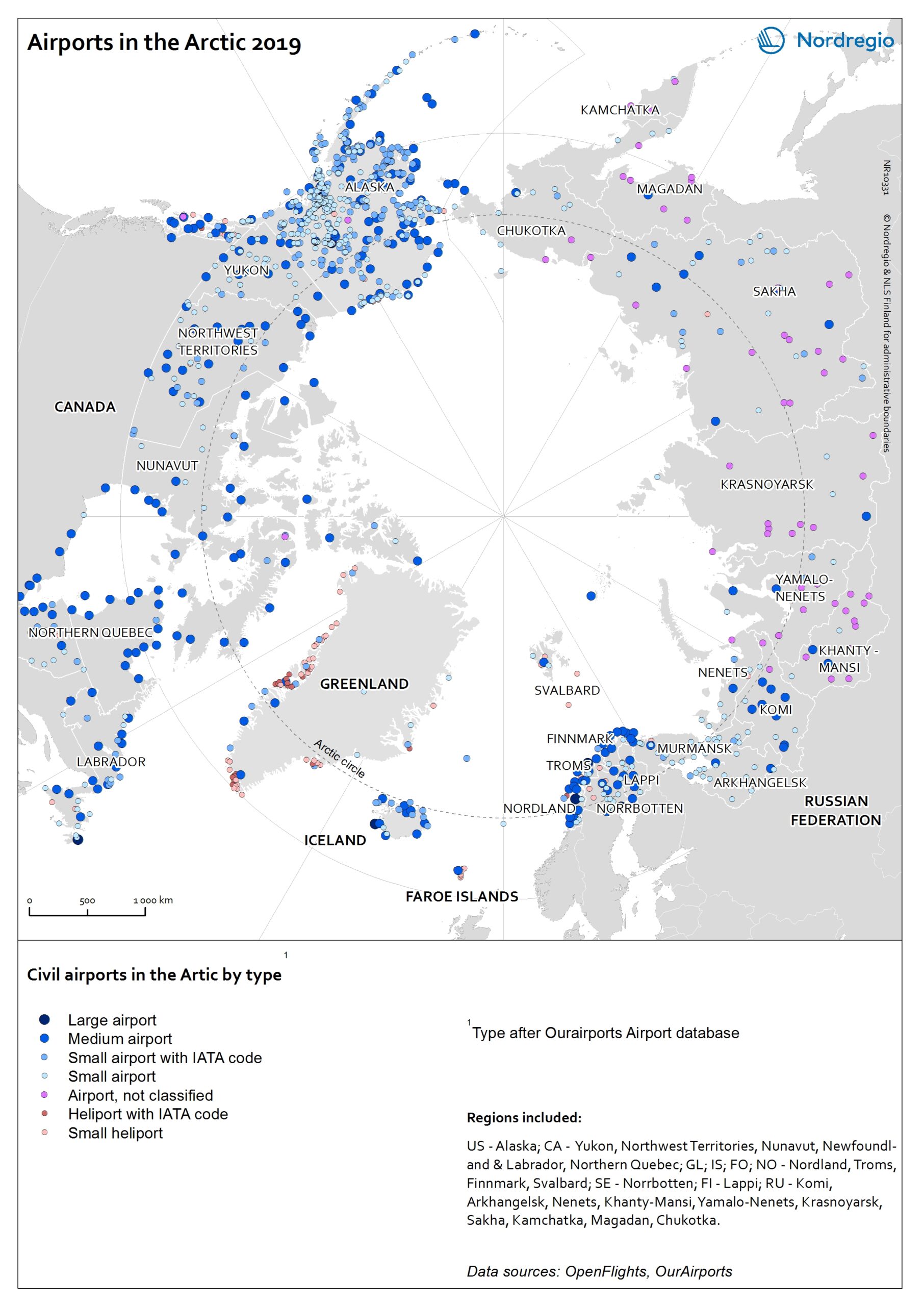Long distances in combination to the lack of road and railroad connections and seasonal accessibility of water transport makes airports an important element of local accessibility in the Arctic.
There are only a few large airports in the Arctic with regular air connections to national capitals or other main cities more south – or abroad – however, there is a large number of small airports.
The ca. 1300 airports and heliports of the Arctic are shown on the map. Seven large and 260 medium sized airports with regular passenger traffic are the main airport infrastructure in the Arctic. Small airports are shown on the map in two categories, those with IATA code and those without. There are 265 small airports with an IATA code and most of these airports have regular air traffic. The small airports without an IATA code are 500 and comprise small airports with some scheduled traffic to airports for spare time aviation and landing sites. In addition, there are some 60 airports – mostly in the Russian Federation – that are not classified due to a lack of data regarding their size.
The aviation in Greenland heavily depends on heliports. Many Greenlandic settlements are located along the shore, in small islands, fjords, or adjacent to mountains – in place where building an airport would be impossible or very expensive due to challenging physical conditions. In Greenland all the settlements have either an airport or a heliport depending on the size of the settlement and physical conditions. In other Nordic Arctic regions, the airports are located in the main settlements or in isolated islands. Almost all remaining settlements have road connection to an airport or a heliport. In the Canadian Arctic and Alaska (USA) almost all settlements have an airport. In the Russian Arctic the number of airports is more limited. However, the map only includes civil airports, while many airports and landing sites in the Russian Arctic are located within a military area.
